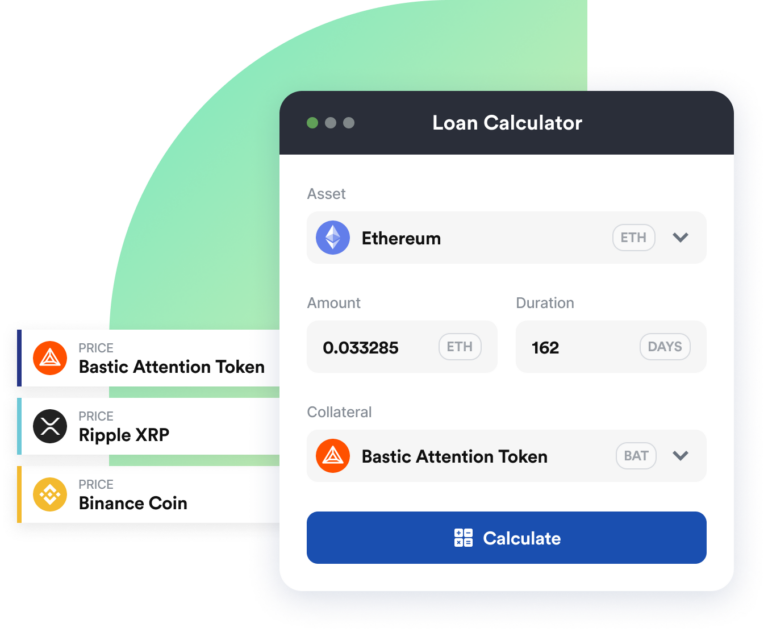As we witness a shift in financial systems towards digitization, crypto lending platforms have emerged as a major player in the field of decentralized finance. These platforms facilitate borrowing and lending of cryptocurrencies, yielding higher returns and offering financial flexibility for users.
The Basics of Crypto Lending
Crypto lending platforms, also known as decentralized finance (DeFi) lending platforms, are online services that allow for peer-to-peer or pool-based lending and borrowing of cryptocurrencies. At their core, these platforms aim to replace the intermediary role traditionally played by banks, using smart contracts on blockchain networks to enforce loan agreements.
Benefits of Crypto Lending Platforms
The advent of crypto lending platforms is changing the landscape of traditional financial systems. They offer a unique blend of benefits, attracting an ever-growing user base from around the world.
But what are these benefits? How do they shape the experiences of borrowers and lenders in the crypto space? In the following sections, we’ll explore the primary advantages of using crypto lending platforms.
High Returns
One of the most notable benefits of crypto lending platforms is the potential for high returns. These platforms function on a decentralized network, which means they cut out the middlemen, thus reducing costs and passing those savings onto their users in the form of higher returns.
Liquidity
Crypto lending platforms provide much-needed liquidity to the market. By allowing users to use their digital assets as collateral, they can access loans to meet their immediate cash needs without having to liquidate their assets.
Flexibility and Security
Crypto lending platforms provide flexibility by allowing users to choose their loan terms. Moreover, they utilize the power of blockchain to ensure the security of the transactions, as every transaction is transparent and cannot be tampered with.
Major Crypto Lending Platforms
Given the expanding realm of crypto lending, there are several significant players in the industry that have carved out their niche, each offering a unique approach to crypto-backed loans. Whether you’re an investor looking for high returns, a borrower in need of quick liquidity, or simply a crypto enthusiast curious about the space, understanding these platforms is key. Let’s take a closer look at some of the major crypto lending platforms like SmartCredit.io, Binance Lending, and AAVE.
SmartCredit.io
SmartCredit.io is a unique peer-to-peer lending platform that aims to democratize access to credit in the crypto space. The platform is built on the Ethereum blockchain, leveraging its decentralized nature to provide low collateral ratio loans for borrowers and create personal fixed-income funds for lenders.
One of the standout features of SmartCredit.io is its borrower-friendly approach. By using their unique scoring algorithm, SmartCredit.io enables borrowers to get loans with a low collateral ratio, meaning they have to lock up fewer crypto assets to secure a loan.
Moreover, SmartCredit.io provides a ‘Personal Fixed-Income Fund’ feature for lenders. This feature is designed to allow lenders to earn a higher yield on their crypto holdings with a minimized risk. Through this platform, lenders can create their own personalized lending strategy.
Binance Lending
Binance Lending is a feature offered by Binance, one of the world’s leading cryptocurrency exchanges. It allows users to lend their idle cryptocurrencies to earn interest, enabling them to generate passive income without trading their assets.
The lending process on Binance is straightforward. Users can deposit their idle cryptocurrencies into Binance Lending, and over time, earn interest. Binance Lending supports a wide range of cryptocurrencies, providing flexibility to its users.
The platform provides two types of products: fixed-term and flexible. Fixed-term products have a set duration and interest rate, whereas flexible products allow users to withdraw their funds at any time.
AAVE
AAVE is a decentralized non-custodial lending protocol that allows users to lend and borrow a wide range of digital assets. Originally known as ETHLend, AAVE was one of the pioneers of the decentralized lending space.
One of the key features of AAVE is its use of aTokens, which represent the interest that lenders earn on the platform. When users deposit funds into AAVE, they receive a corresponding amount of aTokens. As borrowers repay their loans with interest, the amount of aTokens held by lenders increases.
Another distinctive feature of AAVE is its ‘Flash Loans’ offering. Flash Loans allow developers to borrow assets without collateral, under the condition that the loan is returned within the same transaction block. This feature has opened up possibilities for innovative use cases like arbitrage, collateral swapping, and self-liquidation.
All of these platforms have unique features and advantages, but they also come with their own risks. As always, it’s crucial to do your research and understand how these platforms work before getting involved.
How Crypto Lending Platforms Work
The mechanics of crypto lending platforms involve facilitating loans between borrowers and lenders.
Lending Process
The borrower deposits their crypto assets as collateral to secure the loan. The lender provides the loan in either fiat or another cryptocurrency. The loan amount is typically less than the value of the collateral to accommodate for the volatility in the cryptocurrency market.
Interest Rates and Loan Repayment
The interest rates on crypto lending platforms can be fixed or variable. The loan and the accrued interest are repaid over the agreed loan term.
Risk and Challenges in Crypto Lending Platforms
While crypto lending platforms present promising returns and flexibility, it’s essential to understand that they also come with their share of risks and challenges. Like any other financial venture, crypto lending isn’t without its perils. From market volatility to regulatory uncertainties, let’s delve into the potential risks and challenges you may face while navigating the world of crypto lending platforms.
Market Volatility
Cryptocurrencies are known for their price volatility. This volatility can significantly impact the value of the collateral, thus presenting a risk for both the borrower and the lender.
Default Risk
The risk of borrowers defaulting on their loans is another major concern in crypto lending. While platforms try to mitigate this risk through over-collateralization, the risk cannot be completely eliminated.
Regulatory Challenges
Crypto lending platforms also face regulatory uncertainty, as this is a relatively new industry and lawmakers are still figuring out the appropriate legal framework.
How to Choose the Right Crypto Lending Platform
When choosing a crypto lending platform, it is essential to consider the platform’s reputation, interest rates, security measures, and customer service.
The Future of Crypto Lending Platforms
With the rise of decentralized finance, crypto lending platforms are poised for significant growth. These platforms are set to disrupt traditional financial systems and are likely to become an integral part of our financial future.
Conclusion
Crypto lending platforms, with their high returns and liquidity provisions, are changing the financial landscape. Despite the risks involved, the rewards can be substantial, making it an interesting avenue for both borrowers and lenders.
Frequently Asked Questions (FAQs)
Given the novelty and complexity of the crypto lending landscape, it’s natural to have a plethora of questions. How do these platforms work? What risks are involved? How can one choose the right platform? To help clear the air and provide you with a better understanding, we’ve compiled a list of the most frequently asked questions about crypto lending platforms, complete with comprehensive answers. Let’s get your queries sorted!
What are crypto lending platforms?
Crypto lending platforms are online services that facilitate peer-to-peer or pool-based lending and borrowing of cryptocurrencies. They offer several benefits such as high returns, liquidity, flexibility, and security.
How do crypto lending platforms work?
Crypto lending platforms work by connecting borrowers and lenders. Borrowers deposit their crypto assets as collateral to secure a loan, while lenders provide the loan in either fiat or another cryptocurrency. The loan is repaid over an agreed term with interest.
What are the risks associated with crypto lending platforms?
The major risks associated with crypto lending platforms include market volatility, default risk, and regulatory challenges. Market volatility can significantly impact the value of the collateral. The risk of borrowers defaulting on their loans is another concern. Additionally, the regulatory framework for crypto lending is still being developed, adding a layer of uncertainty.
How can I choose the right crypto lending platform?
When choosing a crypto lending platform, consider factors such as the platform’s reputation, the interest rates it offers, its security measures, and its level of customer service.
What is the future of crypto lending platforms?
Crypto lending platforms are expected to play a significant role in the future of finance due to their potential to offer high returns, provide liquidity, and foster financial inclusion.







